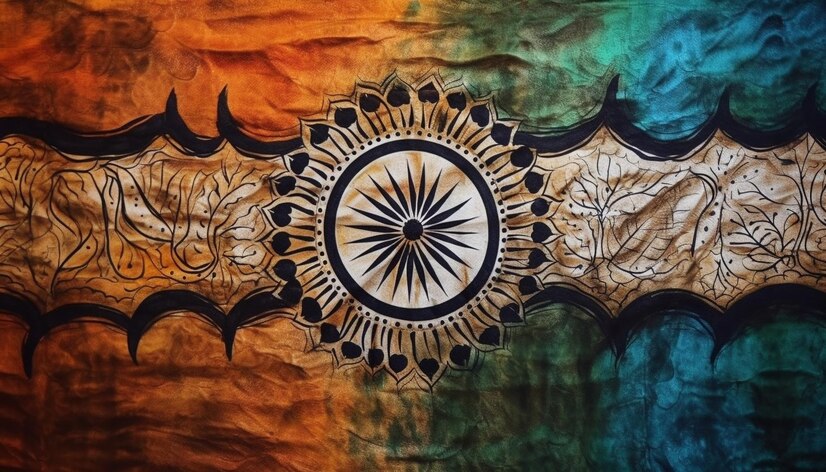India, a land of diverse landscapes, cultures, and traditions, stands as a testament to the beauty of human diversity. From the mighty Himalayas to the sun-kissed beaches of Goa, and from the bustling streets of Delhi to the tranquil backwaters of Kerala, India offers a tapestry of experiences for travelers and residents alike.
India’s geographical diversity is staggering, encompassing everything from snow-capped mountains to arid deserts and lush rainforests. The country is bordered by the Indian Ocean to the south, the Arabian Sea to the southwest, and the Bay of Bengal to the southeast. Its climate varies greatly from region to region, with tropical climates in the south, arid deserts in the west, and temperate climates in the north.
India’s rich history dates back thousands of years, with evidence of ancient civilizations such as the Indus Valley Civilization, which flourished around 2500 BCE. The country has been home to various dynasties and empires, including the Maurya, Gupta, and Mughal empires, each leaving a profound impact on Indian culture and society.
The arrival of European powers, particularly the British East India Company in the 17th century, marked the beginning of colonial rule in India. The British Raj, which lasted for nearly two centuries, saw significant changes in Indian society, economy, and politics, leading to the independence movement.
Led by visionaries like Mahatma Gandhi, Jawaharlal Nehru, and Subhas Chandra Bose, India’s struggle for independence culminated in 1947 when the country finally gained freedom from British rule. This event marked the beginning of a new era in Indian history, characterized by hope, resilience, and the promise of a brighter future.
India is renowned for its cultural diversity, with over 2,000 distinct ethnic groups and more than 1,600 spoken languages. This diversity is reflected in its festivals, cuisine, music, dance, and art forms, making India a vibrant mosaic of traditions and customs.
India boasts one of the world’s fastest-growing major economies, driven by sectors such as information technology, telecommunications, agriculture, and manufacturing. The country is also a global leader in software services and outsourcing, with cities like Bangalore and Hyderabad emerging as technology hubs.
As the world’s largest democracy, India has a complex political landscape characterized by a multi-party system and federal structure. The President is the ceremonial head of state, while the Prime Minister is the head of government. The Indian Parliament consists of two houses: the Lok Sabha (House of the People) and the Rajya Sabha (Council of States).
India has made significant strides in various fields, including space exploration, nuclear technology, and healthcare. However, the country still faces challenges such as poverty, inequality, corruption, and environmental degradation, which require concerted efforts from both the government and civil society to address.
From the iconic Taj Mahal to the ancient temples of Varanasi, India is home to a wealth of tourist attractions that attract millions of visitors from around the globe. Whether exploring historical monuments, experiencing wildlife safaris, or indulging in yoga retreats, there’s something for everyone in India.
India has a robust education system, with prestigious institutions like the Indian Institutes of Technology (IITs) and Indian Institutes of Management (IIMs) producing world-class graduates. The country is also at the forefront of technological innovation, with a thriving startup ecosystem and a growing emphasis on research and development.
India’s healthcare system faces challenges related to accessibility, affordability, and quality of care. While significant progress has been made in improving healthcare infrastructure and expanding insurance coverage, disparities persist, particularly in rural areas.
As one of the world’s most populous countries, India faces numerous environmental challenges, including air and water pollution, deforestation, and climate change. Initiatives such as the National Clean Air Programme and Swachh Bharat Abhiyan aim to address these issues and promote sustainable development.
As a prominent member of international organizations like the United Nations and the World Trade Organization, India plays a crucial role in shaping global affairs. The country’s strategic location, economic strength, and diplomatic influence make it a key player on the world stage.
Despite its challenges, India remains a beacon of hope and opportunity, with immense potential for growth and development. With a young and dynamic population, a vibrant democracy, and a spirit of innovation, the future looks promising for the world’s largest democracy.
India’s journey from ancient civilizations to modern-day powerhouse is a testament to the resilience and ingenuity of its people. As the country continues to evolve and navigate the complexities of the 21st century, it remains a source of inspiration and admiration for the world.
- What are some must-visit destinations in India?
From the Taj Mahal in Agra to the backwaters of Kerala and the Golden Temple in Amritsar, India offers a plethora of unforgettable experiences for travelers. - What is India famous for?
India is renowned for its rich cultural heritage, diverse cuisine, Bollywood film industry, historical monuments, and spiritual traditions such as yoga and meditation. - How is the food in India?
Indian cuisine is known for its bold flavors, aromatic spices, and regional diversity. From savory curries to crispy dosas and mouthwatering street food, there’s something to delight every palate. - What is the best time to visit India?
The best time to visit India depends on the region and the activities you have planned. Generally, the winter months (October to March) offer pleasant weather for sightseeing and outdoor activities. - Is it safe to travel to India?
While India is generally safe for tourists, it’s essential to exercise caution and take necessary precautions, such as avoiding isolated areas, safeguarding valuables, and staying informed about local customs and regulations.
Nail Pops in Ceiling
H&M Indonesia
DISHWASHER AIR GAP PLUMBING
Advantage Inspection
